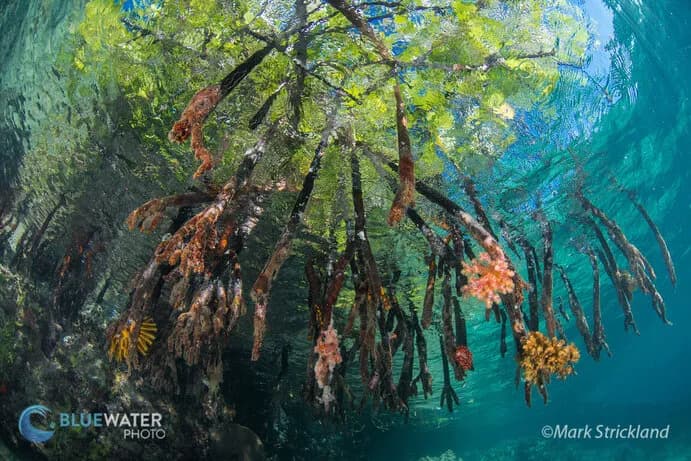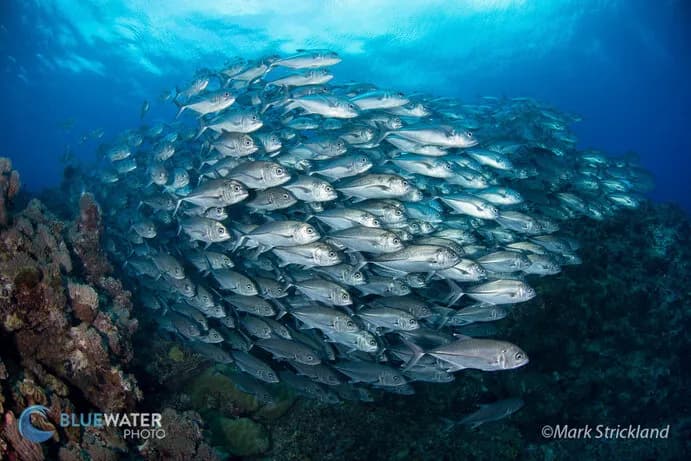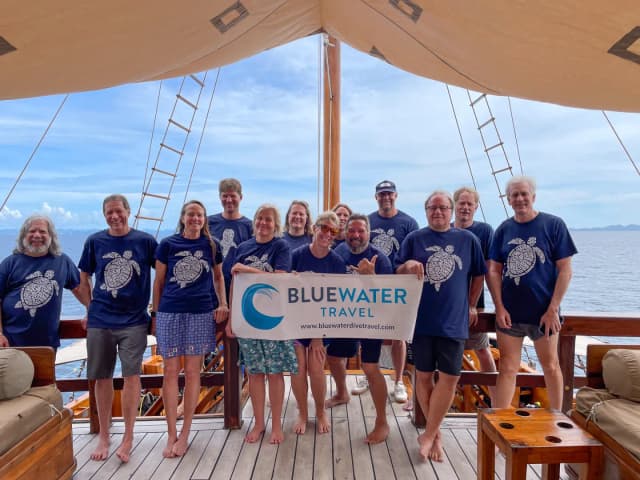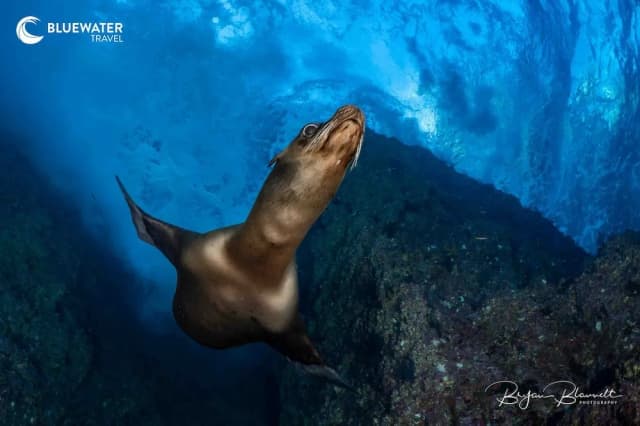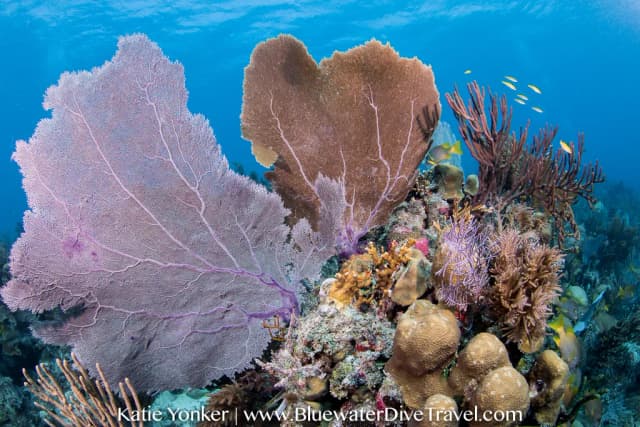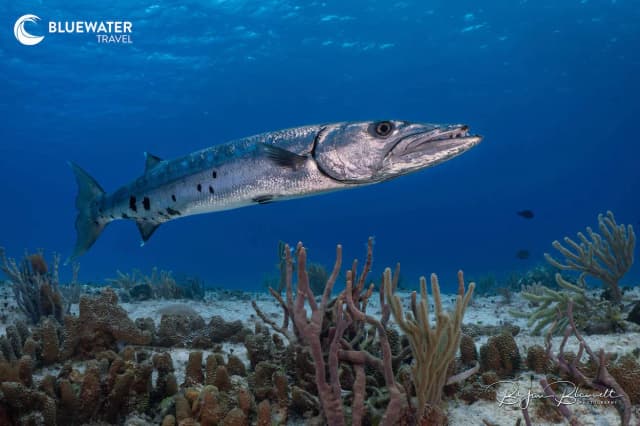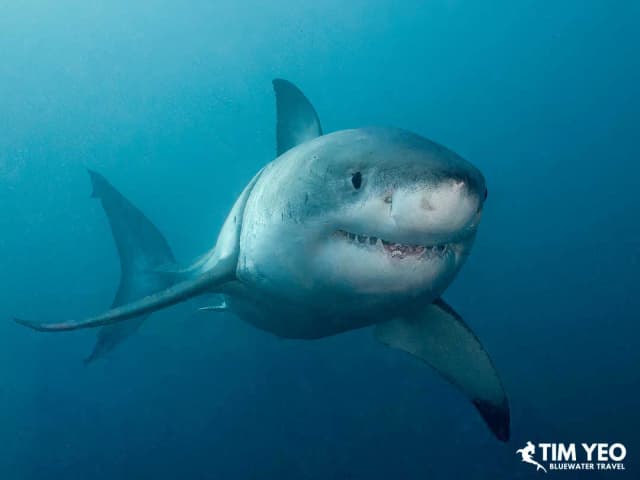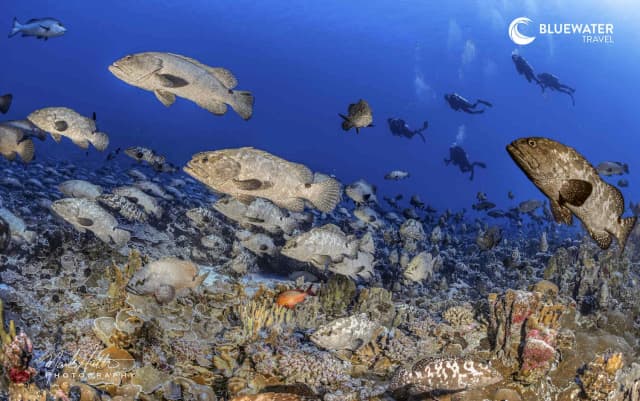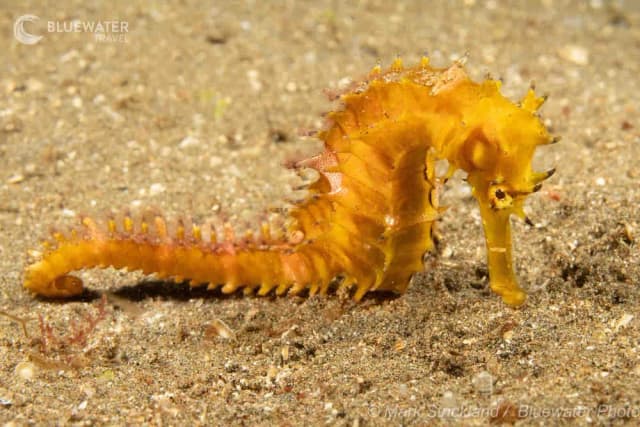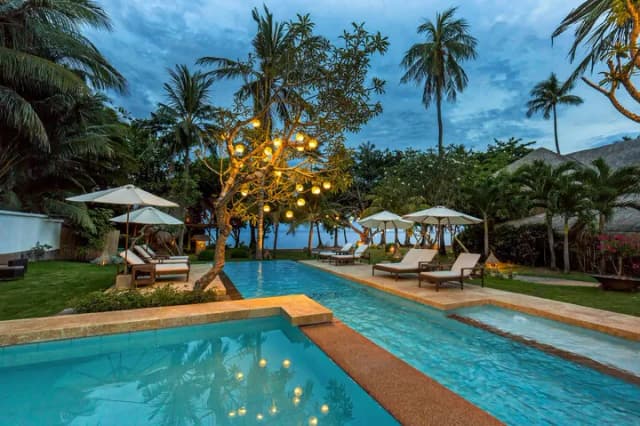Solomon Islands Photo Workshop With Bluewater Travel
Words by Mark Strickland
Lying to the east of Papua New Guinea in the tropical South Pacific, the Solomon Islands offer an abundance of marine life, healthy reefs, varied underwater terrain, historic WWII wrecks, and vibrant local culture. Its easier to access than popular destinations like Raja Ampat, yet over the course of 17 days, we rarely saw another dive boat. Its hard to say why this area isnt overrun with divers, but we certainly werent complaining!
Our adventure consisted of two consecutive cruises on the venerable Bilikiki, a 120 ft. motor vessel thats been plying these waters for many years. Managers Tina and Oli welcomed us aboard in late afternoon, and soon we were enjoying snacks and drinks on the foredeck at sunset while being briefed on what to expect in the coming week.
Morning found us in the Russell Islands group, within a protected bay at Kovilok Island. Being the first dive of the trip, Tina did a very comprehensive briefing on dive procedures, supplemented by a detailed diagram and explanation of the dive site. While an easy check-out site, Kovilok was really quite scenic, with a good variety of reef fish and huge purple and yellow elephant-ear sponges.
Our next dive was one of the best known of Solomons sites, a narrow cleft in the limestone shoreline known as Leru Cut. Back-rolling from the tinnies (aluminum tenders) within a few feet of shore, we gazed into deep blue water, bordered by a steep drop-off where a forest of large fan corals and red sea whips swayed in gentle current. As we rounded a small point, a distinctive crevice came into view, running vertically from about 40 ft. all the way to the surface and extending over 300 ft. into the island.
While wide enough for several divers to swim side-by-side, we split into 3 groups to avoid overcrowding, giving each group 10 minutes all to themselves. Slowly swimming inside, our eyes adjusted to the dimly lit surroundings, the mid-day sun having been filtered by dense rainforest foliage overhead. Our arrival was precisely timed to coincide with a narrow time-window, when shafts of brilliant sunlight pierced the water column in several spots and danced on the white sand floor. The visual impact of this natural light show is hard to capture adequately with words or photos, but it was an unforgettable experience, and most guests came away with decent images as well.
A delicious lunch was served as we steamed to our next location, Mane Point, where we did both afternoon dives. Here, a finger of reef sticks out into deep water, serving as home to a wide spectrum of marine life ranging from gray reef sharks to flatworms and everything in between, as well as lots of healthy hard corals. Night dives were offered almost every evening including this one, with sightings including sleeping parrotfish, octopus, and a variety of shrimp and crabs.
The next day found us at another iconic site, Mary Island, which is surrounded by deep, open ocean. Known for clear water and great schooling fish action, Mary did not disappoint. Visibility was nothing short of stunningeasily 150 feetand we were surrounded by fish on every dive. Even before the first dive, a young Napoleon wrasse made several passes by the boat, a sneak preview of coming attractions.
Descending on the steep slope, a constant parade of fish life kept us company rainbow runners, king mackerel, and husky dog-tooth tuna patrolled in the blue, while an assortment of colorful reef fish and a small hawksbill turtle browsed among the hard corals. The entire dive was filled with interesting and beautiful marine life, but the gentle current was not sufficient to attract the schooling jacks and barracuda that this site is famous for.
We neednt have worried though, as the current picked up considerably on the next dive, when we found ourselves amongst a massive school of bigeye jacks, which hovered almost motionless in the vigorous flow. Most of our group opted to latch on with reef hooks, allowing them to fly effortlessly among the silvery fish, which readily accepted them into their ranks. Many stayed with the jacks the entire dive, while others headed off to explore the shallows. We never saw big numbers of barracuda, but had nice interactions with the jacks on several dives, as well as a gang of perhaps twenty baby gray reef sharks that looked to be only weeks old.
Although the main attraction here is schooling fish, one reef fish deserves special mention: the flame angelfish. Extremely shy by nature, these brilliant little fish seem to take great delight in frustrating photographers, remaining hidden in the coral most of the time, only occasionally emerging for a quick dash to the next coral head, then hiding again. They are a real test of any photographers patience, but those who put in the time were well rewarded, as several guests got compelling portraits.
Speaking of photography, imaging is a priority on all Bluewater photo workshop expeditions, and these trips were no exception. Guests camera systems ranged from modest compacts to sophisticated, professional-grade DSLRs, but everyone was keen to take advantage of the wealth of photo ops that surrounded us.
In addition to actual shooting, trip leader Mark offered personalized guidance and instruction throughout the trip. Perhaps the most popular aspect of the workshop, however, was the daily image review, along with a Best Of slideshow on the last day. It was very gratifying seeing how much everyones images improved throughout the trip, and I think all participants left with some images to be proud of.
After Mary Island, we headed back to the Russell Islands for several more days, diving sites ranging from eerie caverns like Bat Cave, where you could surface among the fury winged inhabitants, to current-swept reefs like Karumolun Point, where dog-tooth tuna and gray reef sharks streamed past fans and soft corals at depth, while clouds of fusiliers and damselfish hovered amongst hard corals in the shallows.
Another treat was White Beach, which had been a U.S. military base in WWII. As the war moved on to other parts of the Pacific, vast amounts of machinery were scuttled here, leaving a ghostly underwater graveyard of trucks, barges, and other materials littering the silty slopes, along with many vintage Coca Cola bottles. Aside from war relics, this site also offered some great critter diving, with mantis shrimp, nudibranchs, and unusual fish like signal gobies, robust ghost pipefish, and archerfish among the mangroves.
Another highlight of any Solomons trip is the chance to interact with the local people, and Bilikiki does a great job of facilitating this. From their first year of operation, Bilikiki management has made a point of engaging with the locals in a respectful and mutually beneficial manner. For example, by providing them with seeds and agricultural assistance, Bilikiki has enabled villagers to grow a wide variety of produce for their own consumption, as well as selling them to the boat, providing much-needed income.
Almost daily, a flotilla of villagers paddled out to greet us in tiny dugouts loaded with fresh fruits and vegetables, which Tina then purchased as they gathered around the stern. Its a classic win-win, improving the lives of local people while helping Bilikiki provide fresher food and a better guest experience.
As the trip rolled on we continued exploring the Russell Islands, diving the twin seamounts of Rainbow Reef, where big fans and barrel sponges were surrounded by schools of spadefish, milkfish and chevron barracuda, as well as several gray reef sharks. Next was a shallow coral garden at Kaukau, followed by a beautiful, nearly pristine reef at Lologhan, where the seascape is dominated by a wide variety of hard corals in various hues of green, yellow and blue. Several broadclub cuttlefish hovered in the shallows, as legions of lobetail and emperor snappers filed past.
In the few sandy patches, pairs of yellow margin triggerfish worked themselves into a frenzy defending their nests from marauding reef fish, but paid little attention to divers. The dusk dive included visits by a green turtle and an eagle ray, as well as a large school of coronetfish. Just as the last of the suns ray disappeared, we witnessed incredible spawning surgeonfish action, as squadrons of big-mouth mackerel rushed in to devour their eggs within seconds of dispersal near the surface.

The last couple days were spent in the Florida Islands, where we briefly encountered a Minke whale while steaming to our first dive, a small seamount called Twin Tunnels. Here, we descended to the reef top at 50 ft., where a pair of circular entrances lead to a vertical shaft which opens into a large chamber thats adorned with numerous fans and black corals. It bottoms out at 115 ft., where you exit onto a wall with even bigger black coral trees.
As we exited and ascended slightly, Oli swam out into the blue holding a plastic water bottle, with which he quickly attracted half a dozen gray reef sharks that came zooming in to investigatea trick that both he and Tina employed with similar success on many dives.
Later that day which was the final leg of cruise #1, we visited Ghavutu Island, near Tulagi, which was the main Japanese base in the Solomons. Here, we dived the wreck of a Mavis Seaplane a large, 4 engine craft thats mostly intact except for starboard wing, which was blown off in the bombing raid that sank it. Large sponges and black corals encrust much of the wreck, but theres not much color. Visibility was very limited and the 90 ft. depth limited bottom time, so after 10 minutes we moved up the slope to a healthy hard coral reef for the remainder of the dive.
Of particular interest were several huge formations of cabbage coral, each with a large purple elephant ear sponge growing out of the center. The remainder of the day was spent diving the ruins of the Japanese seaplane base, where a silty slope was littered with scattered remains of planes, as well as a barge and jetty that are home to a wealth of critters including signal gobies, pipefish, crocodilefish, and tiny but colorful coral hermit crabs.
The next morning found us back in Honiara, the Solomons capital city on the island of Guadalcanal. The turnaround between trips is a quick and efficient affair with Bilkiki, all accomplished in less than a day. After saying farewell to those who were flying home or to other parts of the Solomons, a half-dozen of us headed off on a historical tour of nearby WWII sites that included American and Japanese memorials, as well as Bloody Ridge, site of some of the most brutal and prolonged fighting in the Pacific theater. Our tour guide, a young local named Chris, clearly appreciated the significance of the history he described to us.
Today, this area looks rather idyllic, with grass-covered hills bordered by shallow, winding streams overlooking the blue Pacific. However, standing there thinking about the horrific battles and great sacrifices that were made, one could not help but be humbled at the bravery and dedication of those who fought here.
By late afternoon we were back aboard Bilikiki with many new guests, as well as five who did both trips. This cruise would be a bit longer at 10 nights, giving us a chance to explore some new areas, as well as returning to many of the best sites from the first trip. Once again our first dive was at Kovilok Bay, where everyone enjoyed exploring among the huge yellow and purple elephant-ear sponges.
Then it was on to Leru Cut, where we were once again struck by the incredible beauty of this fissure in the island shoreline shafts of sunlight streaming down to illuminate white sand bottom, contrasting sharply with the dark recesses of the limestone walls. Looking towards the open sea, the water looks impossibly blue, creating an otherworldly scene. Outside, young gray reef sharks meander among various reef fish, framed by massive orange fan corals and red sea whips. As with the first trip, we also dived Mirror Pond, where the limestone shoreline is riddled with caverns and grottos. One of these recesses is a known hangout for a sizable salt-water crocodile, but to the disappointment of some and relief of others, he failed to make an appearance on our trips.
Much of the second trip was spent revisiting favorite sites from the first one, but the extra days also gave us the opportunity to venture further afield to Marovo Lagoon, another huge area with lots of diving potential. Favorite sites here included steep slopes and walls like Toatolvave Island, where we saw lots of squarespot anthias and red-tooth triggerfish, and protected coves like Mbili Shallow, where highlights included an orangutan crab and yellow leaf scorpionfish. As we arrived at Kokoana Channel, a pod of extra-exuberant spinner dolphins greeted us with countless leaps and somersaults, seemingly inviting us to hit the water. We never saw them underwater, but as the current swept us along a wall and into the lagoon, we did encounter schools of pickhandle and chevron barracuda, along with a flight of eagle rays soaring gracefully in mid-water.
Other notable sites included Lumalihe West, where half a dozen mobula rays swooped and rolled around us, later giving way to rainbow runners and midnight snappers. On the opposite side of the pass, Lumalihe East was also worthwhile, where several more mobulas showed up, along with a good size zebra shark. Karanjou offered lively schooling action, with pickhandle, chevron and great barracudas, plus bigeye jacks, oceanic triggerfish, gray reef sharks and a silvertip, plus healthy soft corals and purple gorgonians where the reef projects into the current.
Later that day we dived the wreck of the Maru II, a Japanese transport ship that was sunk by an American dive bomber and now sits upright in 80 ft. The hull is heavily populated with large black coral trees, many of which are encrusted with purple colonial tunicates. Abundant fish life included schooling snappers, jacks, and some very friendly pinnate and longfin batfish.
The remainder of the trip included visits to Mary Island, the Wreck of the Ann and White Beach, as well as many sites we had not seen previously, along with several more interesting village visits. Unfortunately, a nasty cold virus had made the rounds onboard and many of us had to miss a few dives as a result. However, most guests did get in most of the dives, and I think all would agree that the Solomons offered a unique combination of healthy reefs, abundant marine life, fascinating history and off-the-beaten-path ambience. When can we go again?!
- Mark Strickland
Smiling faces at the end of a wonderful trip.
How To Book A Trip To The Solomon Islands
Bluewater Travel has experience booking personal adventures and leading group trips to the Solomon Islands. We can book you any liveaboard for the same cost or less than booking any other way.
We know the diving, accommodation, cabins and when to go better than anyone else!
Email us at info@bluewaterdivetravel.com
